Blue Porcelain |
||||||||||||||||||||||||||||
 |
 |
|||||||||||||||||||||||||||
Knitted sweater in DROPS BabyMerino and DROPS Kid-Silk. The piece is worked top down with European/diagonal shoulders and lace pattern. Sizes
DROPS 241-1 |
||||||||||||||||||||||||||||
|
------------------------------------------------------- EXPLANATIONS FOR THE PATTERN: ------------------------------------------------------- INCREASE TIP FROM RIGHT SIDE: Increase towards the left AFTER THE MARKER: Use the left needle to pick up the strand between 2 stitches from the previous round, pick up strand from front and knit the back loop. Increase towards the right BEFORE THE MARKER: Use the left needle to pick up the strand between 2 stitches from the previous round, pick up strand from behind and knit the front loop. INCREASE TIP FROM THE WRONG SIDE: Increase towards the left AFTER MARKER: Use the left needle to pick up the strand between 2 stitches from the previous round, pick up strand from behind and purl the front loop. Increase towards the right BEFORE THE MARKER: Use the left needle to pick up the strand between 2 stitches from the previous round, pick up strand from front and purl the back loop. DECREASE TIP (for sleeves): Decrease 1 stitch on either side of the marker-thread mid under sleeve as follows: Work until there are 3 stitches left before the marker-thread, knit 2 together, knit 2 (marker-thread sits between these 2 stitches), slip 1 stitch as if to knit, knit 1 and pass the slipped stitch over the knitted stitch. PATTERN SLEEVE: NOTE! When working A.9 and A.6, the marker-thread on top of the sleeve matches the middle stitch in the repeat of the pattern. Work A.4 for 10 cm = 4". Work A.5 Work A.6. Work A.5 Work A.9. Work A.5 Work stockinette stitch until the sleeve measures 39-40-39-40-39-38 cm = 15¼"-15¾"-15¼"-15¾"-15¼"-15". ------------------------------------------------------- START THE PIECE HERE: ------------------------------------------------------- SWEATER – SHORT OVERVIEW OF THE PIECE: The top of the back piece is worked back and forth on circular needle as far as the armholes. Stiches are knitted up along each shoulder, increases made for the neck and the front piece worked back and forth on circular needle as far as the armholes. The front and back pieces are joined and the body is continued in the round on circular needle. Stiches are knitted up around the armholes and the sleeves worked back and forth to start with, then continued in the round with short circular needle/double pointed needles. The neck is worked in the round to finish. BACK PIECE: Cast on 35-35-41-41-47-53 stitches with circular needle size 5 MM = US 8 and 1 strand of each quality (2 strands). Purl 1 row from the wrong side. Insert 1 marker, inside 3 stitches on each side. Keep them inside these 3 stitches as working onwards. Work as follows from the right side: 3 stockinette stitches, increase towards the left AFTER the marker at the beginning of the row - read INCREASE TIP FROM THE RIGHT SIDE, work A.1, A.2 over the next 24-24-30-30-36-42 stitches, A.3, increase to the right BEFORE the marker at the end of the row - remember INCREASE TIP FROM THE RIGHT SIDE, 3 stockinette stitches. On the next row (wrong side) increase in the same way – read INCREASE TIP FROM THE WRONG SIDE. Continue the pattern and increase both from the right and wrong side a total of 26 times in all sizes. The increased stitches are shown in A.1 and A.3. REMEMBER THE KNITTING GAUGE! After the last increase there are 87-87-93-93-99-105 stitches and the piece measures approx. 12 cm = 4¾" from cast-on edge. Insert 1 marker here (see arrow in diagram A.1). The piece is now measured from here! Finish A.1, A.2 and A.3 (with 3 stockinette stitches on each side). Now work as follows from the right side: 3 stockinette stitches, A.4 until there are 6 stitches left on the row, work the first 3 stitches in A.4, so the pattern is symmetrical and 3 stockinette stitches. Work A.4 1-1-2-2-3-3 times in height. Work A.5 over all stitches 1 time in height. Continue as follows from the right side: 1-1-4-4-1-4 stockinette stitches, work A.6 until there are 2-2-5-5-2-5 stitches left, 2-2-5-5-2-5 stockinette stitches. Work A.6 1 time in height. The piece measures approx. 16-16-18-18-20-20 cm = 6¼"-6¼"-7"-7"-8"-8", measured from the marker by the arrow in A.1, down the armhole. Lay the piece to one side and work the front piece. FRONT PIECE: Start on the left shoulder (when the garment is worn). Wind out approx. 50 cm = 19¾" yarn-end and use it to knit up stitches (this way you can pick up stitches from right side and then continue working from right side without cutting the strand afterwards). Knit up 26 stitches inside the 1 edge stitch (knit up 1 stitch in each stitch) along left shoulder on back piece. Work the first row from the right side as follows: 3 stockinette stitches, insert 1 marker here, work A.7. Continue this pattern. On row 9 in the diagram begin to increase for the neck at the beginning of each row from the right side – remember INCREASE TIP FROM THE RIGHT SIDE, increasing after the 3 stockinette stitches. Increase 1 stitch 4 times = 30 stitches. Finish A.7 and lay the piece to one side (last row is from the wrong side). Wind out approx. 50 cm = 19¾" yarn-end and use it to knit up stitches. Knit up 26 stitches along the right shoulder on the back piece, inside the 1 edge stitch (knit up 1 stitch in each stitch). Work the first row from the right side as follows: A.8, insert 1 marker here, 3 stockinette stitches. Continue this pattern. On row 9 in the diagram begin to increase for the neck at the end of each row from the right side – remember INCREASE TIP FROM THE RIGHT SIDE, increasing before the 3 stockinette stitches. Increase 1 stitch 4 times = 30 stitches. Finish A.8 (last row is from the wrong side). Work the next row as follows from the right side (continue the pattern as before but now working A.4 over A.7 and A.8): Work pattern over the 30 stitches from the right front piece, cast on 27-27-33-33-39-45 stitches for the neck and work pattern over the 30 stitches from the left front piece = 87-87-93-93-99-105 stitches. Work 1 row back from the wrong side; the new stitches are worked in A.4. Work as follows from the right side: 3 stockinette stitches, continue A.4 until there are 6 stitches left on the row, work the first 3 stitches in A.4, 3 stockinette stitches. Work A.4 a total of 2-2-3-3-4-4 times in height. Now work A.5 over all stitches 1 time in height. Continue as follows from the right side: 1-1-4-4-1-4 stockinette stitches, A.6 until there are 2-2-5-5-2-5 stitches left, 2-2-5-5-2-5 stitches in stockinette stitch. Work A.6 1 time in height. The piece measures approx. 24-24-26-26-28-28 cm = 9½"-9½"-10¼"-10¼"-11"-11", measured down the armhole. Now join the back and front pieces as follows: BODY: Work the 87-87-93-93-99-105 front piece stitches on the needle and cast on 3-12-12-21-27-30 stitches at the end of the row (side), work stockinette stitch over the 87-87-93-93-99-105 stitches from the back piece, cast on 3-12-12-21-27-30 stitches at the end of the row = 180-198-210-228-252-270 stitches. Work A.5 in the round (starting on round 2 as round 1 has already been worked). After A.5 work A.9 over all stitches. When A.9 is finished in height, work A.5. When A.5 is finished in height work A.4 over all stitches. Work A.4 two times in height. Work A.5; on the last round in A.5 increase 0-6-6-0-0-6 stitches evenly spaced = 180-204-216-228-252-276 stitches. Work A.6 over all stitches, finishing after either a complete or a half repeat in height, when the piece measures approx. 48-48-50-55-57-57 cm = 19"-19"-19¾"-21⅝"-22½"-22½" measured from the top of the shoulder. Knit 1 round and increase 60-68-76-76-84-92 stitches evenly spaced = 240-272-292-304-336-368 stitches. Change to circular needle size 4 MM = US 6. Work rib (knit 2, purl 2) for 8-10-10-10-10-10 cm = 3⅛"-4"-4"-4"-4"-4". Bind off. The sweater measures approx. 56-58-60-65-67-67 from the top of the shoulder. LEFT SLEEVE: Use circular needle size 5 MM = US 8 and knit up 40-40-44-44-48-48 stitches from the right side, from the bottom of the armhole up to the shoulder along the front piece then 28-28-30-30-32-32 stitches from the shoulder down to the bottom of the armhole on the back piece = 68-68-74-74-80-80 stitches. Insert 1 marker-thread in the middle of the round – it is used when working out where to start the pattern. Work back and forth as follows: 1 stockinette stitch, A.4 until there is 1 stitch left, 1 stockinette stitch. Continue this pattern for 1-4-4-6-8-9 cm = ⅜"-1½"-1½"-2⅜"-3⅛"-3½". Now join the piece and continue in the round with short circular needle/double pointed needles size 5 MM = US 8. Insert a marker-thread mid under sleeve. Start the round at the marker-thread mid under the sleeve and work PATTERN SLEEVES. NOTE! When working patterns A.9 and A.6, the marker-thread matches the middle stitch in the pattern. When the sleeve measures 2 cm = ¾", decrease 2 stitches under the sleeve – read DECREASE TIP. NOTE! The pattern will not always fit under the sleeve when decreasing; the stitches which do not fit are worked in stockinette stitch. Decrease like this every 5½-6-4½-5-3-3 cm = 2⅛"-2⅜"-1⅝"-2"-1⅛"-1⅛" a total of 7-6-8-7-10-9 times = 54-56-58-60-60-62 stitches. Continue working until the sleeve measures 39-40-39-40-39-38 cm = 15¼"-15¾"-15¼"-15¾"-15¼"-15". There is approx. 8 cm = 3⅛" left. Try the sweater on and work to desired length. Knit 1 round and increase 14-16-14-16-16-18 stitches evenly spaced = 68-72-72-76-76-80 stitches. Change to double pointed needles size 4 MM = US 6 and work rib (knit 2, purl 2) for 8 cm = 3⅛". Bind off a little loosely. The sleeve measures approx. 47-48-47-48-47-46 cm = 18½"-19"-18½"-19"-18½"-18". Work the other sleeve in the same way but knit up 28-28-30-30-32-32 stitches from the bottom of the armhole and up the back piece to the shoulder, then 40-40-44-44-48-48 stitches from the shoulder and down the front piece to the bottom of the armhole. Sew the bottom of each armhole – see sketch. NECK: Start on one shoulder and knit up from the right side, inside 1 edge stitch, 88 to 128 stitches with short circular needle size 4 MM = US 6. The stitch-number must be divisible by 4. Work rib in the round (knit 2, purl 2) for 10 cm = 4". Bind off a little loosely. Fold the neck to the inside and fasten with a stitch in each side. |
||||||||||||||||||||||||||||
Diagram explanations |
||||||||||||||||||||||||||||
|
||||||||||||||||||||||||||||

|
||||||||||||||||||||||||||||
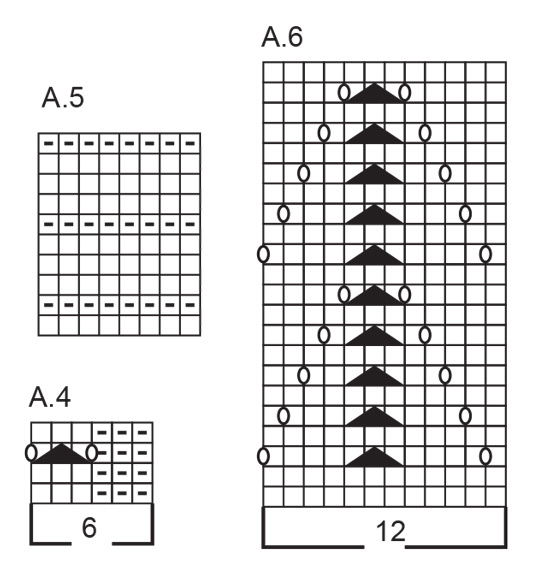
|
||||||||||||||||||||||||||||

|
||||||||||||||||||||||||||||

|
||||||||||||||||||||||||||||
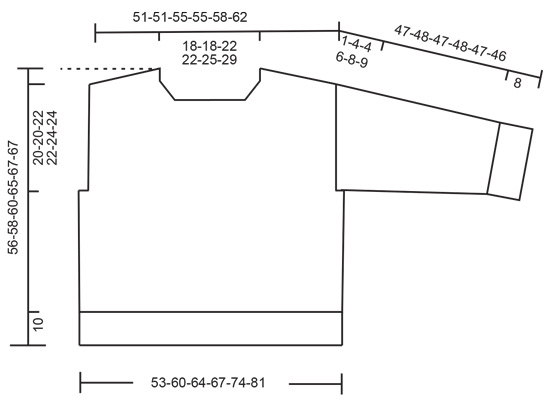
|
||||||||||||||||||||||||||||
|
Have you made this or any other of our designs? Tag your pictures in social media with #dropsdesign so we can see them! Do you need help with this pattern?You'll find tutorial videos, a Comments/Questions area and more by visiting the pattern on garnstudio.com. © 1982-2024 DROPS Design A/S. We reserve all rights. This document, including all its sub-sections, has copyrights. Read more about what you can do with our patterns at the bottom of each pattern on our site. |
||||||||||||||||||||||||||||













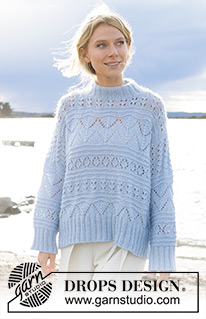
















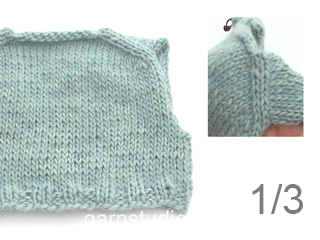
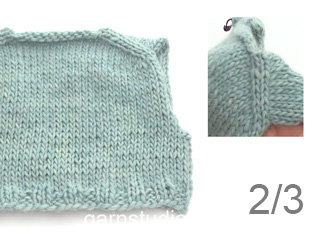
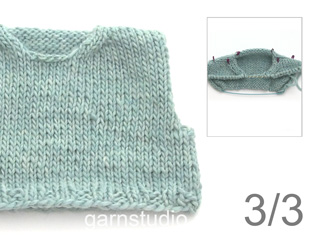




























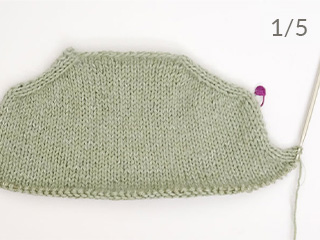
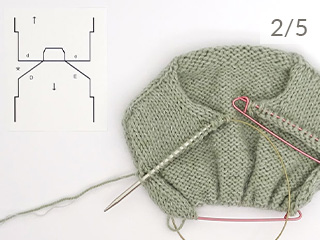
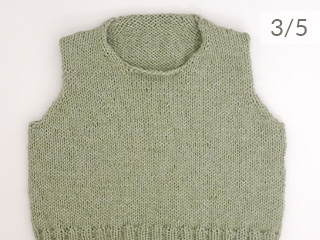

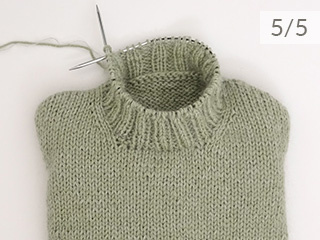






















Comments / Questions (67)
Ich kann den Mustersatz nicht lesen Sind das nur Hinreihen oder sind Hin und Rückreihen gezeichnet
04.04.2024 - 16:25DROPS Design answered:
Liebe Katrin, alle Reihen sind im Diagram gezeichnet, die Hinreihen lesen Sie rechts nach links und die Rückreihen links nach rechts. Viel Spaß beim Stricken!
05.04.2024 - 08:02Me ha encantado el jersey, muy bien explicado, fácil de comprender y con un resultado genial.
01.04.2024 - 10:04Hello, I have a problem with the Blue Porcelain pattern, specifically with the measurements of the armhole. In the text, it says that it should be 24 cm (for M size), but in the design (plan) it says it should be 20 cm. Could you please help. Best regards, Tatjana Tatjana
28.02.2024 - 10:02DROPS Design answered:
Dear Tatjana, when working this kind of jumpers with european shoulders, the shoulders will be slightly in diagonal towards back piece, so that armhole on back piece is 16 cm (shorter than n front piece), armhole on front piece is 24 cm so that you get: (16+24)/2= 20 cm for the armhle. See the different videos showing how to work this kind of shoulders at the bottom the pattern, it will help you. Happy knitting!
28.02.2024 - 15:30Hei, takakappaleen aloituksessa neuvotaan tekemään lisäykset oikealla puolella oikein silmukoin, nurjalla nurjin. Mutta jos toimii näin, kuviot A1 ja A3 eivät toteudu. Eikö lisäykset pitäisi tehdä sen mukaan, miltä A1 ja A3 näyttävät eli lisätään joko nurja tai oikea sen mukaan miltä niiden tulee näyttää oikealta puolelta katsottuna?
05.10.2023 - 19:16DROPS Design answered:
Hei, lisätyt silmukat neulotaan piirrosten mukaisesti.
24.11.2023 - 17:29This is a lovely pattern! When I work A9, row 7, do I skip the first stitch? It does not seem to line up properly. Thanks
28.06.2023 - 17:58DROPS Design answered:
Dear Anne, on 5th row in A.9 (diagrams are read from bottom up), slip the first stitch as if to K, then work diagram to the end: the last 2 sts will be worked with the first stitch next repeat, continue like this, at the end of the round, work the last 2 sts last repeat with the slipped stitch at the beg of the round. Happy knitting!
29.06.2023 - 12:37Hei. Hvordan anbefales det å vaske denne modellen, da det er 2 forskjellige garntyper?
31.03.2023 - 14:39DROPS Design answered:
Hei Tone Grethe, Kid Silk er anbefalt vasket på 30 grader og tørket flat, så da er det lurt å vaske plagget på denne måten, selv om Baby Merino alene kan vaskes på 40 grader. God fornøyelse!
03.04.2023 - 06:55Cómo se lava este jersey? Gracias
10.03.2023 - 13:57DROPS Design answered:
Hola María, debido a las lanas utilizadas, esta prenda se lava a mano con un detergente especial para lana y, después de aclarar, enrollar en una talla y apretar para quitar el exceso de agua (sin retorcer) y dejar secar en una superficie plana (evitar dejar secar bajo luz directa del sol).
12.03.2023 - 17:29På første mønsteromgang på 241-1 er det 35 masker (og så øker man 2 før og etter mønster) når jeg har strikket A1 og A2 i 24 masker så gjenstår det5 masker før merket og økning til høyre. Skal disse 5 strikkes i A3? Altså bare vrang på retten?
28.02.2023 - 19:01DROPS Design answered:
Hei Katrin. Nei, du har 35 masker ( i str. S og M). Sett 1 merke på innsiden av de ytterste 3 maskene i hver side. Strikk 3 masker rett, øke etter oppskriften, strikk A.1 (over 4 masker), strikk A.2 4 ganger (= 24 masker). Du har nå igjen 4 masker, strikk A.3 (= 1 maske), øk etter oppskriften og strikk de 3 siste maskene (= 3+4+24+1+3= 35 masker). mvh DROPS Design
06.03.2023 - 11:30Jeg får desværre ikke garn nok til halskraven i garntypen Baby Merino i størrelse small.
24.02.2023 - 11:45Good morning~ Wether the KNITTING TENSION is knitted in 5mm needle or 4mm needle? Thank you
18.02.2023 - 04:17DROPS Design answered:
Dear Xing, the GAUGE or KNITTING TENSION is worked with 5mm needles. Happy knitting!
19.02.2023 - 19:37